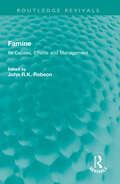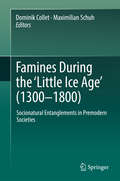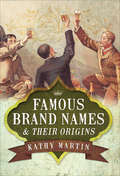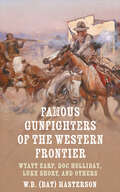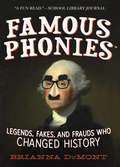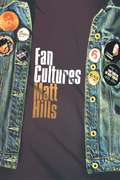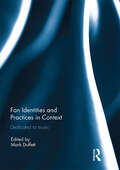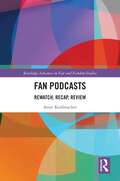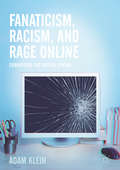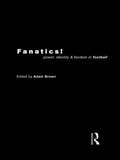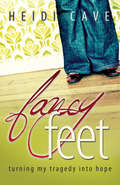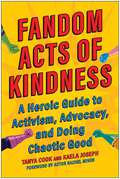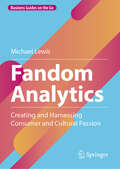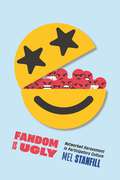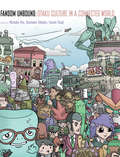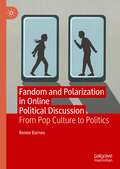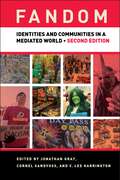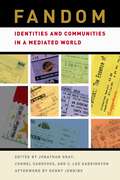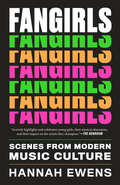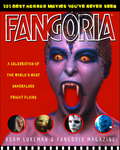- Table View
- List View
Famine: Its Causes, Effects and Management (Routledge Revivals)
by John R.K. RobsonIn Famine (1981), a collection of essays by experts from the developing world and advanced agricultural societies, the authors share their ecological perspectives and provide an insight into the multiple causes of famine. They examine the fact that the main cause of famine is more likely to be as a result of human actions, rather than the vagaries of climate, and look at whether planned intervention by governments and relief agencies may compound the problems already existing.
Famines During the ʻLittle Ice Ageʼ (1300-1800)
by Dominik Collet Maximilian SchuhThis highly interdisciplinary book studies historical famines as an interface of nature and culture. It will bring together researchers from the natural and social sciences as well as the humanities. With reference to recent interdisciplinary concepts (disaster studies, vulnerability studies, environmental history) it will examine, how the dominant opposition of natural and cultural factors can be overcome. Such an integrated approach includes the "archives of nature" as well as "archives of man". It challenges deterministic models of human-environment interaction and replaces them with a dynamic, historicising approach. As a result it provides a fresh perspective on the entanglement of climate and culture in past societies.
Famished: Eating Disorders and Failed Care in America
by Rebecca J. LesterWhen Rebecca Lester was eleven years old—and again when she was eighteen—she almost died from anorexia nervosa. Now both a tenured professor in anthropology and a licensed social worker, she turns her ethnographic and clinical gaze to the world of eating disorders—their history, diagnosis, lived realities, treatment, and place in the American cultural imagination. Famished, the culmination of over two decades of anthropological and clinical work, as well as a lifetime of lived experience, presents a profound rethinking of eating disorders and how to treat them. Through a mix of rich cultural analysis, detailed therapeutic accounts, and raw autobiographical reflections, Famished helps make sense of why people develop eating disorders, what the process of recovery is like, and why treatments so often fail. It’s also an unsparing condemnation of the tension between profit and care in American healthcare, demonstrating how a system set up to treat a disease may, in fact, perpetuate it. Fierce and vulnerable, critical and hopeful, Famished will forever change the way you understand eating disorders and the people who suffer with them.
Famous Brand Names & Their Origins
by Kathy Martin&“This fascinating and enjoyable book tells the story of around 200 brand names, delving succinctly into their origins and fortunes over time&” (Your Family History). Many brands, including Boots, Hoover, and Kelloggs, were named after their founders whilst others have less obvious origins; for instance, did you know that Velcro comes from velours and crochet, the French words for &“velvet&” and &“hook?&” This entertaining book by Kathy Martin explores the stories behind the brands, their names, and their founders. Bursting with fascinating facts and period advertising, this must-read book will appeal to everyone interested in advertising, social history, food, and famous names. &“A well-written, slightly idiosyncratic and thoroughly delightful book. That the author knows and loves her subject is very evident . . . It is likely to have wide appeal, and be of use to both Historians and Joe and Jane Public.&” —NZ Crown Mines
Famous Gunfighters of the Western Frontier: Wyatt Earp, Doc Holliday, Luke Short and Others
by W. B. MastersonDiscover these tales of frontier justice and life-and-death struggles will transport you to a bygone era of adventure and excitement. Originally published in 1907, Bat Masterson's gripping collection of short biographies introduces you some of the most famous lawmen and notorious outlaws of the Wild West, including cattle rustlers, sharpshooters, and gunslingers. From Doc Holliday and Wyatt Earp to lesser known figures like Luke Short, Famous Gunfighters of the Western Frontier is packed with daring feats and larger-than-life characters.
Famous Phonies: Legends, Fakes, and Frauds Who Changed History (Changed History Series)
by Brianna DumontFakes, frauds, and phonies. Sounds like a book filled with criminals and delinquents, doesn't it? Well, it's not. Some of the biggest names in history can be found between these pages-and the light isn't flattering. (We're looking at you, George "I must not tell a lie" Washington.) Famous Phonies: Legends, Fakes, and Frauds Who Changed History is the first book in a new nonfiction middle grade series that will explore the underbelly of history, making you question everything you thought you knew about history's finest. Follow the fake lives of these twelve history-changers to uncover the fabrications of the famous, and the should-be-famous!Famous "Phonies":Confucius George Washington Pythagoras Hiawatha Gilgamesh Major William Martin William Shakespeare Pope Joan Homer Prester John Huangdi The Turkle grade series that will explore the underbelly of history, making you question everything you thought you knew about history's finest. It's perfect for the history buff, the reluctant reader, or that kid who loves the strange and unusual. And who doesn't? Famous "Fakes":The Yellow Emperor * Gilgamesh * Homer * Pythagoras * Confucius * Mary Magdalene * Hiawatha * Prester John * William Shakespeare * George Washington * The Turk * Major William Martin
Fan Cultures (Sussex Studies in Culture and Communication)
by Matthew HillsEmphasising the contradictions of fandom, Matt Hills outlines how media fans have been conceptualised in cultural theory. Drawing on case studies of specific fan groups, from Elvis impersonators to X-Philes and Trekkers, Hills discusses a range of approaches to fandom, from the Frankfurt School to psychoanalytic readings, and asks whether the development of new media creates the possibility of new forms of fandom. Fan Cultures also explores the notion of "fan cults" or followings, considering how media fans perform the distinctions of 'cult' status.
Fan Identities and Practices in Context: Dedicated to Music
by Mark DuffettPopular music is not simply a series of musicians, moments, genres or recordings. Audiences matter; and the most ardent audience members are the fans. To be a fan is to feel a connection with music. The study of fandom has begun to emerge as a vital strand of academic research, one that offers a fresh perspective on the nature of music culture. Dedicated to Music investigates fan identities and practices in different contexts and in relation to different bands and artists. Through a series of empirical case studies the book reflects a diverse array of objects and perspectives associated with this vibrant new field of study. Contributors examine how fans negotiate their identities and actively pursue their particular interests, touching on a range of issues including cultural capital, generational memory, gender, fan fiction and the use of new media. This book was originally published as two special issues of Popular Music and Society.
Fan Podcasts: Rewatch, Recap, Review (Routledge Advances in Fan and Fandom Studies)
by Anne KorfmacherStarting from the observation of the ubiquity of fan podcasts engaging in media commentary, this book explores three fan podcast genres in which commentary manifests as a structuring form: rewatch and reread podcasts, recap podcasts, and review podcasts.The author conducts a formalist genre analysis of these podcasts, close reading nine case studies to describe how the three genres function and how different fan labour manifests in podcasting. Each case study teases out the themes, style, and formal constellations of the three podcast genres, shows how different fans activate the affordances of podcasting and commentary, and reveals the distinct generic functions of the three podcast genres.This book will be of significant interest to scholars and students in podcast studies, fan studies, cultural studies and literary studies who are interested in fan podcasts, podcast genre analysis, and ways of close reading podcasts as texts.
Fanaticism, Racism, and Rage Online
by Adam KleinFanaticism, Racism, and Rage Online is a critical exploration of digital hate culture and its myriad infiltrations into the modern online community. The book examines radical movements that have emerged both on the fringes of the Internet, as well as throughout the web's most popular spaces where extremist voices now intermix with mainstream politics and popular culture. This investigation brings to light the different forms of extremist culture on the web, from the blatant hate websites, to the much more invasive faux-social networks, racist political blogs, and pseudo-scientific domains.
Fanaticism: On the Uses of an Idea
by Alberto ToscanoA genealogy of fanaticism—unearthing its long history, before it became a tool in the Clash of CivilizationsThe idea of fanaticism as a deviant or extreme variant of an already irrational set of religious beliefs is today invoked by the West in order to demonize and psychologize any non-liberal politics.Alberto Toscano’s compelling and erudite counter-history explodes this accepted interpretation in exploring the critical role fanaticism played in forming modern politics and the liberal state. In a radical new interpretation, he places the fanatic at the very heart of politics, arguing that historical and revolutionary transformations require a new understanding of his role. Showing how fanaticism results from the failure to formulate an adequate emancipatory politics, this illuminating history sheds new light on an idea that continues to dominate debates about faith and secularism.From the Trade Paperback edition.
Fanatics: Power, Identity and Fandom in Football
by Adam BrownEmbracing studies of football fans across Europe, this book tackles questions of power, national and regional identities, and race and racism, highlighting the changing role of fans in the game. Combining new approaches to the study of fan culture with critical assessments of the commercialization of the game, this fascinating book offers a comprehensive and timely examination of the state of European football supporters culture as the game prepares itself for the next millennium. The contributors, all leading figures in sports studies, consider: * whether football remains the peoples game, or if it is now run entirely by and for club owners and directors who have overseen the flotation of clubs on the stock exchange, a new focus on merchandising and the escalation of players salaries* the role of FIFA and UEFA in the struggle for control of world football* manifestations of racism and extreme nationalism in football, from the English medias xenophobic coverage of Euro 96 to the demonisation of Eric Cantona* media representations of national identity in football coverage in Germany, France and Spain * the interplay of national, religious and club identities among fans in England, Scotland, Ireland, Portugal and Scandinavia* the role of the law in regulating football * the future for supporters at a time when watching the match is more likely to mean turning on the television than going to a football ground.
Fancy Feet
by Heidi CaveA team of firefighters fought to save Heidi's life after a horrific accident that killed her best friend, burned over 53 percent of Heidi's body, and claimed both her legs. The following year followed countless surgeries, surviving, pain management, fighting, and loss. Until she finally faces the driver who changed her life, Heidi realizes she has one last hurdle: forgiveness.Heidi Cave is a well-respected advocate for burn survivors and amputees, and serves on a board of advisors for the BC Professional Fire Fighters' Burn Fund's efforts to build a research laboratory and treatment center in Vancouver.
Fandom Acts of Kindness: A Heroic Guide to Activism, Advocacy, and Doing Chaotic Good
by Tanya Cook Kaela JosephFandom can save the world! This first of its kind, actionable and inspirational resource provides the tools and motivation necessary for pop culture fans to make a difference—while having fun! Fandoms are united as a community because of the power of story. And it&’s exactly the magical alchemy forged when mixing story and community that has helped fandoms across the world feed thousands of hungry children, donate countless books, build schools, register voters, disrupt online hate speech, and save lives through crafting PPE for COVID-19 frontline workers, natural disaster response, and mental health crisis support. Fandom Acts of Kindness not only tells the stories of the good fans have done in the world but serves as a dungeon master&’s guide to how to be a hero yourself. Perfect for those who want to inspire others, organize collective action, sustain, and nurture your own mental health and creativity, and do it all through a pop culture perspective.
Fandom Analytics: Creating and Harnessing Consumer and Cultural Passion (Business Guides on the Go)
by Michael LewisThe success of modern sports, entertainment, political, and other cultural categories is driven by organizations’ ability to create and manage fandom. This book explores fandom from a marketing perspective providing a multidisciplinary framework for understanding, measuring, and growing fandom. It provides a fandom analytics framework for creating and managing fandom and identifies the macro forces (technology, demographics, etc.) that are changing fandom’s structure and societal role. The book goes beyond understanding the foundations of fandom by demonstrating how marketing tools may be employed to value and manage fandom assets. It is designed for existing and new generations of sports and entertainment professionals, as well as scholars, students, and academics interested in sports and entertainment marketing and analytics.
Fandom Is Ugly: Networked Harassment in Participatory Culture (Critical Cultural Communication #47)
by Mel StanfillHighlights the importance of considering contemporary public culture through the lens of fan studiesThe Gamergate harassment campaign of women in video games, the “Unite the Right” rally where hundreds of Confederate monument supporters cried out racist and antisemitic slurs in Charlottesville, and the targeted racist and sexist harassment of Star Wars’ Asian American actress Kelly Marie Tran all have one thing in common: they demonstrate the collective power and underlying ugliness of fandoms. These fans might feel victimized or betrayed by the content they’ve intertwined with their own identities, or they may simply feel that they’re speaking truth to power. Regardless, by connecting via social media, they can unleash enormous amounts of hate, which often results in severe real-world consequences.Fandom Is Ugly argues that reactionary politics and media fandoms go hand in hand, and to understand one, we need to understand the other. Mel Stanfill pushes back on two mainstream assumptions: that media and the pleasure of consumption are frivolous and unworthy of study, and that fandoms are inherently progressive. Drawing on a corpus of angry social media posts, Fandom Is Ugly finds that ugly moments happen when deep emotional attachments collide with social structures and situations that have been misunderstood. By holistically examining the forms of ugly fandom in cases that touch upon race, gender, and sexuality, Fandom Is Ugly produces a comprehensive theory of the negative sides of fan attachments.
Fandom Unbound: Otaku Culture in a Connected World
by Mizuko Ito Daisuke Okabe Izumi TsujiIn recent years, otaku culture has emerged as one of Japan’s major cultural exports and as a genuinely transnational phenomenon. This timely volume investigates how this once marginalized popular culture has come to play a major role in Japan’s identity at home and abroad. In the American context, the word otaku is best translated as “geek”—an ardent fan with highly specialized knowledge and interests. But it is associated especially with fans of specific Japan-based cultural genres, including anime, manga, and video games. Most important of all, as this collection shows, is the way otaku culture represents a newly participatory fan culture in which fans not only organize around niche interests but produce and distribute their own media content. In this collection of essays, Japanese and American scholars offer richly detailed descriptions of how this once stigmatized Japanese youth culture created its own alternative markets and cultural products such as fan fiction, comics, costumes, and remixes, becoming a major international force that can challenge the dominance of commercial media. By exploring the rich variety of otaku culture from multiple perspectives, this groundbreaking collection provides fascinating insights into the present and future of cultural production and distribution in the digital age.
Fandom and Polarisation in Online Political Discussion: From Pop Culture to Politics
by Renee BarnesThis book takes an innovative fan studies approach to investigating one of the most pressing issues of contemporary times: polarization. Drawing on three years of observational data from Facebook political discussions, as well as interviews and survey responses from those heavily engaged in online political debate, Barnes argues a fan-like investment in a political perspective initiates and drives polarization. She calls on us to move beyond the traditional Habermasian approach to political discussion, which privileges the rational and deliberative, and instead focus on how we perform the self. How we behave in these online debates is part of a performance, a performance of self, in which an affective investment in a particular political perspective drives a need to contribute, refute and ‘other’ those opposing. Because this performance stems from an emotional basis, judgments and contributions are often not rational or factual, but rather a form of establishing and defending an identity.
Fandom for Us, by Us: The Pleasures and Practices of Black Audiences (Postmillennial Pop)
by Alfred L. Jr.The convergence of the politics of representation and Black fan culturesBoldly going where few fandom scholars have gone before, Fandom for Us, by Us breaks from our focus on white fandom to center Black fandoms. Alfred L. Martin, Jr., engages these fandoms through what he calls the “four C’s”: class, clout, canon, and comfort.Class is a key component of how Black fandom is contingent on distinctions between white, nationally recognized cultural productions and multicultural and/or regional cultural productions, as demonstrated by Misty Copeland’s ascension in American Ballet Theatre. Clout refers to Black fans’ realization of their own consumer spending power as an agent for industrial change, reducing the precarity of Blackness within historically white cultural apparatuses and facilitating the production of Black blockbusters like 2018’s Black Panther. Canon entails a communal fannish practice of sharing media objects, like the 1978 film The Wiz, which lead them to take on meanings outside of their original context. Comfort describes the nostalgic and sentimental affects associated with beloved fan objects such as the television show, Golden Girls, connected to notions of Black joy and signaling moments wherein Black people can just be themselves.Through 75 in-depth interviews with Black fans, Fandom for Us, by Us argues not only for the importance of studying Black fandoms, but also demonstrates their complexities by both coupling and decoupling Black reception practices from the politics of representation. Martin highlights the nuanced ways Black fans interact with media representations, suggesting class, clout, canon, and comfort are universal to the study of all fandoms. Yet, for all the ways these fandoms are similar and reciprocal, Black fandoms are also their own set of practices, demanding their own study.
Fandom, Second Edition: Identities and Communities in a Mediated World
by Jonathan Gray C. Lee Harrington Cornel SandvossA completely updated edition of a seminal work on fans and how fandom shapes the culture, social relations, economic models, and politics of our age. We are all fans. Whether we follow our favorite celebrities on Twitter, attend fan conventions such as Comic Con, or simply wait with bated breath for the next episode of our favorite television drama—each of us is a fan. Recognizing that fandom is not unusual, but rather a universal subculture, the contributions in this book demonstrate that understanding fans—whether of toys, TV shows, celebrities, comics, music, film, or politicians—is vital to an understanding of media audiences, use, engagement, and participatory culture in a digital age. Including eighteen new, original essays covering topics such as activism directed at racism in sports fandom, fan/producer interactions at Comic Con, the impact of new technologies on fandom, and the politics and legality of fanfic, this wide-ranging collection provides diverse approaches to fandom for anyone seeking to understand modern life in our increasingly mediated, globalized and binge-watching world. &“An excellent collection, the second edition of Fandom continues to push the boundaries of fan studies in bold directions. Reflecting the new developments in the field, this lively, engaging, and high-quality volume will be the go-to book for anyone engaged with the future of fan culture.&” —Jason Mittell, Middlebury College&“This new edition of Fandom takes fan studies in exciting new directions, providing a crucial intervention into the way the field is evolving. Thought-provoking and mature, it will change the way we think about the next generation of fan scholarship. A fantastic book.&” —Paul Booth, author of Digital Fandom 2.0 and Playing Fans
Fandom: Identities and Communities in a Mediated World
by Jonathan Gray C. Lee Harrington Cornel SandvossWe are all fans. Whether we log on to Web sites to scrutinize the latest plot turns in Lost, "stalk" our favorite celebrities on Gawker, attend gaming conventions, or simply wait with bated breath for the newest Harry Potter novel--each of us is a fan. Fandom extends beyond television and film to literature, opera, sports, and pop music, and encompasses both high and low culture. Fandom brings together leading scholars to examine fans, their practices, and their favorite texts. This unparalleled selection of original essays examines instances across the spectrum of modern cultural consumption from Karl Marx to Paris Hilton, Buffy the Vampire Slayer to backyard wrestling, Bach fugues to Bollywood cinema¸ and nineteenth-century concert halls to computer gaming. Contributors examine fans of high cultural texts and genres, the spaces of fandom, fandom around the globe, the impact of new technologies on fandom, and the legal and historical contexts of fan activity. Fandom is key to understanding modern life in our increasingly mediated and globalized world.
Fangirls: Scenes from Modern Music Culture (American Music Series)
by Hannah EwensOne of Pitchfork&’s 15 Favorite Music Books of 2020: &“An entertaining, in-depth examination of fan subcultures.&” ―The A.V. Club &“To be a fan is to scream alone together&”—this is the discovery Hannah Ewens makes in Fangirls: how music fandom is at once a journey of self-definition and a conduit for connection and camaraderie; how it is both complicated and empowering; and how now, more than ever, fandoms composed of girls and young queer people create cultures that shape and change an entire industry. Speaking to hundreds of fans from the UK, US, Europe, and Japan, Ewens tells the story of music fandom using its own voices, recounting previously untold or glossed-over scenes from modern pop and rock music history. In doing so, she uncovers the importance of fan devotion: how Ariana Grande represents both tragedy and resilience to her followers, or what it means to meet an artist like Lady Gaga in person. From One Directioners to members of the Beyhive to the author&’s own fandom experiences, this book reclaims the &“fangirl&” label for its young members, celebrating their purpose, their power, and, most of all, their passion for the music they love. &“Excellent.&” —The Independent
Fangirls: Scenes from Modern Music Culture (American Music Series)
by Hannah EwensOne of Pitchfork&’s 15 Favorite Music Books of 2020: &“An entertaining, in-depth examination of fan subcultures.&” ―The A.V. Club &“To be a fan is to scream alone together&”—this is the discovery Hannah Ewens makes in Fangirls: how music fandom is at once a journey of self-definition and a conduit for connection and camaraderie; how it is both complicated and empowering; and how now, more than ever, fandoms composed of girls and young queer people create cultures that shape and change an entire industry. Speaking to hundreds of fans from the UK, US, Europe, and Japan, Ewens tells the story of music fandom using its own voices, recounting previously untold or glossed-over scenes from modern pop and rock music history. In doing so, she uncovers the importance of fan devotion: how Ariana Grande represents both tragedy and resilience to her followers, or what it means to meet an artist like Lady Gaga in person. From One Directioners to members of the Beyhive to the author&’s own fandom experiences, this book reclaims the &“fangirl&” label for its young members, celebrating their purpose, their power, and, most of all, their passion for the music they love. &“Excellent.&” —The Independent
Fangoria's 101 Best Horror Movies You've Never Seen
by Adam LukemanA FEAST OF FRIGHTFUL FLICKS WAITING TO BE REDISCOVEREDAs the leading name in the world of horror, Fangoria magazine has been the source of information for fans of fright flicks for more than twenty years--covering feature films, video games, comic books, collectibles, and all aspects of horror entertainment. Working closely with Fangoria's experts, including Editor in Chief Anthony Timpone, Adam Lukeman has compiled a must-have guide for casual horror fans and hardcore horror junkies with Fangoria's 101 Best Horror Films You've Never Seen. With a brief synopsis for each of the included films, lists of cast and crew, "Terror Trivia," and little-known facts about these lesser-known but must-see gems, Fangoria's 101 Best Horror Films You've Never Seen offers a feast of gruesome information. Featured here are flicks that were dumped by their distributors or were initially flops, like Cherry Falls, Manhunter, and Pumpkinhead, foreign winners such as Cronos, The Vanishing, and Funny Games, and straight-to-video sleepers waiting to be discovered, including Shadowbuilder, Jack Be Nimble, and Nomads. There are even surprise entries directed by industry giants--movies like George A. Romero's Day of the Dead, Brian De Palma's Sisters, or Dario Argento's Opera--that are frequently overshadowed by the filmmakers' other, better-known works but are worthy of further examination. Entertaining and informative, Fangoria's 101 Best Horror Movies You've Never Seen offers more than a hundred reasons to look beyond the often ho-hum Hollywood hype fests . . . when you're really in the mood to feel your flesh crawl.From the Trade Paperback edition.
Fannie Barrier Williams: Crossing the Borders of Region and Race
by Wanda A. HendricksBorn shortly before the Civil War, activist and reformer Fannie Barrier Williams (1855-1944) became one of the most prominent educated African American women of her generation. Hendricks shows how Williams became "raced" for the first time in early adulthood, when she became a teacher in Missouri and Washington, D.C., and faced the injustices of racism and the stark contrast between the lives of freed slaves and her own privileged upbringing in a western New York village. She carried this new awareness to Chicago, where she joined forces with black and predominantly white women's clubs, the Unitarian church, and various other interracial social justice organizations to become a prominent spokesperson for Progressive economic, racial, and gender reforms during the transformative period of industrialization. By highlighting how Williams experienced a set of freedoms in the North that were not imaginable in the South, this clearly-written, widely accessible biography expands how we understand intellectual possibilities, economic success, and social mobility in post-Reconstruction America.
